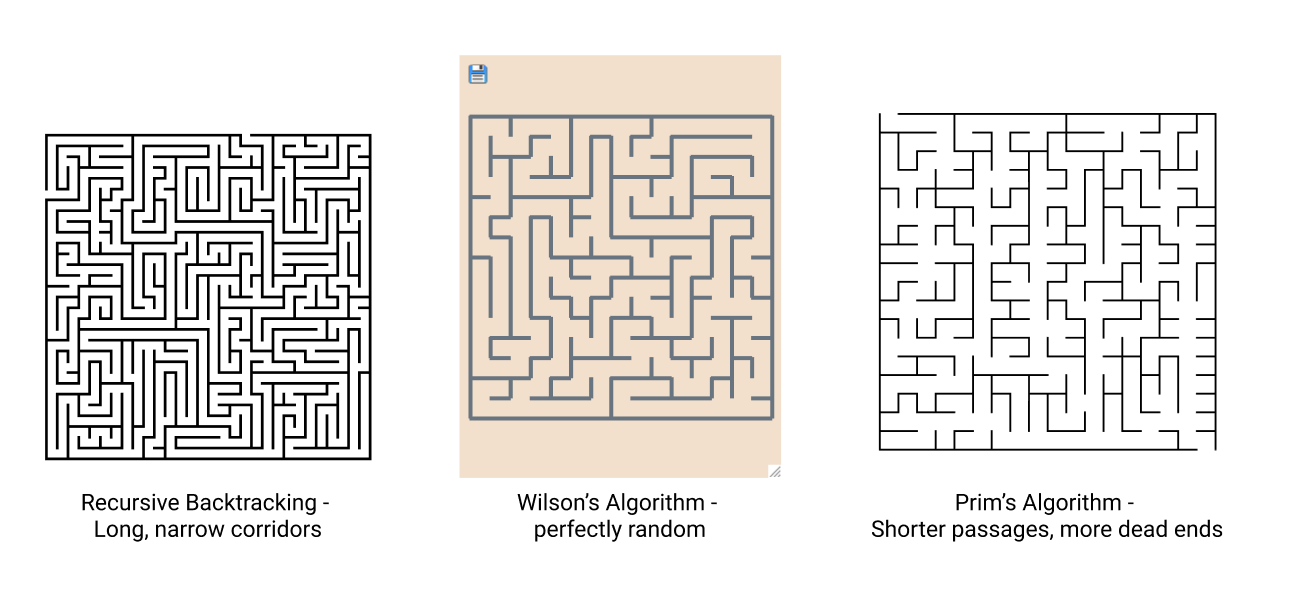Minimum Spanning Trees
9pts
Algorithms
No code
Minimum spanning trees and its various algorithms
Who doesn’t love a good maze? Small, little puzzles for children to
solve or for farmers to grow. Everyone knows the basic principles
behind every maze, but have you ever tried making one yourself? Give
it a shot. Spend a couple of minutes drawing out a maze and see what
you can come up with.
Not so easy, is it? Now imagine drawing a gigantic, elaborate maze,
one with millions of unique paths that no human could ever solve.
Such a task would be a serious challenge for even the most skilled
artists and architects, but not for a computer. How can we program a
computer to create a maze for us? Well, let’s start by formalizing
what a maze consists of. To simplify things, let’s assume that we
are working with a rectangular maze composed of only vertical and
horizontal lines.
A maze has these properties:
- Exactly one entry point and one exit point
- Exactly one path going from the entry to the exit (excluding paths involving backtracking)
- Every path other than the correct one should result in a dead-end
Using these parameters, we can make some abstractions about our
problem. Between any two given points in our maze, there should be
exactly one path from the start to that point (if we never
backtrack), and it should be possible to reach any location in the
maze. If you’ve read the previous articles, this should remind you
of a tree. Recall that one property of a tree is a graph where there
is exactly one path between every set of two nodes. We can then
simplify this problem to constructing a tree out of a group of
nodes.
Visualize our maze as a grid of rectangular cells. Each cell has 4
walls, and we want to break a number of these walls such that we
satisfy our constraint that there is exactly one path between any
two cells. After doing so, all that’s left is to break two of the
outer walls to create a starting and ending point.

The graph equivalent of breaking a wall between two cells is
constructing an edge between the two nodes representing those cells.
So essentially, we have a collection of nodes where each node has up
to four potential connections. Our task is choosing some number of
those neighbors to connect to with an edge, forming a tree
containing all of the nodes. This is known as a
spanning tree. We could easily make a simple maze (shown
below) that fits all the constraints, but that wouldn’t make an
exciting maze. We want something more challenging to solve.

To make a more complex maze, we need to randomize our algorithm. We
can randomly choose walls to break until we get a spanning tree. If
you’ve heard of the minimum spanning tree problem, a
random spanning tree is the same idea but being random rather
than the minimum. Many different algorithms accomplish this that all
vary based on running speed and how it randomly makes decisions.
Some random spanning tree algorithms are biased toward long, narrow
corridors (recursive backtracking), while others create shorter dead
ends (Kruskal’s algorithm, Prim’s algorithm), and others use a
perfectly random uniform distribution (Wilson’s algorithm). Some
algorithms start with a grid full of walls and break them to form
paths, while others begin with a blank slate and place walls.

Ultimately, all of these maze generation algorithms may have a
different way of producing the spanning tree, but they all have the
same central idea: forming a spanning tree out of a set of nodes. So
next time you ever find yourself needing to draw a maze, however
often or rare that may be, think about how a computer would do it.
Try it out right now. Start with a grid of squares and erase walls
until you have a maze, then compare it to what you drew at the
beginning of this article!